.
13.09.2015

Rocket/Payload: An Atlas V 421 will launch the Morelos-3 mission for Mexico’s Secretaria de Comunicaciones y Transportes (Ministry of Communications and Transportation). The United Launch Alliance Atlas V is provided by Lockheed Martin Commercial Launch Services.
Date/Site/Launch Time: Friday, Oct. 2, 2015, from Space Launch Complex-41 at Cape Canaveral Air Force Station, Florida. The launch window is 6:08–6:28 a.m.EDT.
Mission Description: Morelos-3 will be part of the Mexsat constellation of satellites owned by Secretaria de Comunicaciones y Transportes and operated by Telecomunicaciones de Mexico that delivers advanced telecommunications throughout Mexico.
The Mexsat program provides secure communications for Mexico’s national security needs in addition to providing communications to rural zones, as a complement to other existing networks. These satellite communication services include education and health programs, voice, data, video, and internet services.
Launch Notes: Morelos-3 will be the 57th Atlas V launch since the vehicle’s inaugural mission in 2002 and the fifth in the 421 configuration.
Quelle: ULA
-
Update: 25.09.2015
.


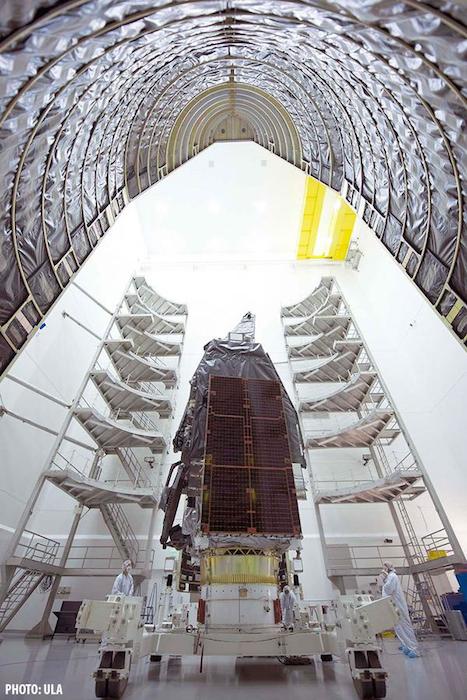

Quelle: ULA
-
Update: 1.10.2015
.
One at a time, ULA reaches 100th launch Friday
For the second time this year—and only the fifth occasion in its history—United Launch Alliance (ULA) will fly the venerable Atlas V booster in its sparingly-used “421” configuration on Friday, 2 October, when it aims to loft Mexico’s Morelos-3 communications satellite into Geostationary Transfer Orbit (GTO), for eventual delivery to an altitude of about 22,300 miles (35,900 km). Liftoff of the mission, which represents the ninth of 12 planned flights conducted by the Centennial, Colo.-based company’s fleet of Atlas V, Delta IV, and Delta II boosters in 2015, is scheduled to occur from Space Launch Complex (SLC)-41 at Cape Canaveral Air Force Station, Fla., during a 20-minute “window,” extending from 6:08 through 6:28 a.m. EDT. According to Air Force meteorologists, weather conditions are expected to be 70-percent favorable for the opening launch attempt on Friday, improving to 80 percent for the backup opportunity on Saturday, 3 October. This mission will also secure a place in ULA’s history books as the 100th flight executed by the company since its formation way back in December 2006.
With ULA about to enter its 10th year of operations, the company can look back with a measure of pride over its accomplishments. Its genesis dates back to the mid-1990s, when Lockheed Martin and Boeing were successful bidders for the Air Force’s Evolved Expendable Launch Vehicle (EELV) contracts, with the former basing its architecture on the Atlas V and the latter on the Delta IV. Both companies developed common booster cores for their respective vehicles, emphasizing standardization and the use of proven, reliable technologies, but a few years later claims of industrial espionage led to complex litigation which ended with a decision to merge and form ULA, which came into existence on 1 December 2006. For its part, the Air Force had long sought such an alliance, hoping that it would allow the Atlas V and Delta IV to function in parallel, keeping both systems viable, reducing cost overheads, and avoiding the unnecessary duplication of efforts.
Dovetailed into these plans for a united Atlas V/Delta IV fleet was the well-proven and highly reliable Delta II, which executed the first launch under ULA’s auspices on 14 December 2006, when it delivered the classified NROL-21 payload on behalf of the National Reconnaissance Office. This was followed, in March 2007, by the company’s first Atlas V flight, which lofted six military research satellites, and in November 2007, by its first Delta IV, flying in the “Heavy” configuration—currently the most powerful rocket in active, operational service, equipped with a trio of Common Booster Cores (CBCs)—which transported a Defense Support Program (DSP) early-warning sentinel into orbit.
Over the course of almost nine years, ULA’s 99 missions have seen the Atlas V fly 48 times, the Delta II 28 times, and the Delta IV (in its Medium and Heavy configurations) on 23 occasions. Between them, they have undertaken more than 50 dedicated military missions, carrying classified NROL payloads for the National Reconnaissance Office and a wide range of communications, weather-forecasting, ocean surveillance, and missile early-warning satellites. Highlights of this military career include the heavyweight Mobile User Objective System (MUOS), which tipped the ULA payload scales at 15,000 pounds (6,800 kg) when its first member was launched in February 2012, as well as four flights by the X-37B Orbital Test Vehicle (OTV) unpiloted mini-shuttle. Meanwhile, within the civilian and scientific spheres, the fleet has transported spacecraft to explore Earth’s Van Allen radiation belts, to search for water on the Moon, to investigate the gamma-ray Universe, to better understand the nature of the Sun, to identify distant “exoplanets”, to visit Mars—including the Phoenix polar lander, the Curiosity rover, and most recently the Mars Atmosphere and Volatile Evolution (MAVEN) orbiter—and to voyage beyond the asteroid belt to Jupiter. Additionally, Atlas Vs have launched two members of NASA’s Tracking and Data Relay Satellite (TDRS) network, and, last December, a Delta IV Heavy successfully boosted the first Orion spacecraft on the multi-hour Exploration Flight Test (EFT)-1. All told, ULA’s missions have delivered approximately $80 billion of U.S. Government and commercial payloads into space.
The launch rate to achieve these successes has been equally impressive. In 2009, ULA reached its peak by staging no fewer than 16 missions—eight Delta IIs, five Atlas Vs, and a trio of Delta IVs—whilst last year’s 14-flight accomplishment presently sits in second place and 2007 holds third place with 13 launches. The various combinations of Delta IIs and Delta IVs have flown a maximum of 11 times in a single calendar year, whilst the Atlas V peaked in 2014 at nine launches for the first time. Moreover, ULA’s policy of “Perfect Product Delivery” has seen a high record of mission success. The Atlas V has performed flawlessly on each of its launches, save for a Centaur upper-stage glitch in June 2007, which produced a lower than intended thrust for its classified payload, whilst the Delta IV suffered an upper-stage anomaly in October 2012, although its Global Positioning System (GPS) passenger achieved its correct orbit. As for the Delta II, it is the one of the most reliable boosters in existence, with an unbroken chain of 98 successful flights behind it and only two failures in its 153-launch, 26-year operational history.
That said, ULA has delivered relatively few commercial communications satellites into orbit. In fact, throughout its history, the company has launched only two—the 14,625-pound (6,634-kg) ICO-G1 payload, which was the largest and most massive commercial comsat in the world at the time of its April 2008 launch, and Intelsat-14, lofted in November 2009—which both flew aboard Atlas Vs. As a result, when contracts to launch Morelos-3 were signed in September 2013, it was recognized that Morelos-3 will represent only the third GTO-bound commercial comsat ever to fly atop a ULA booster.
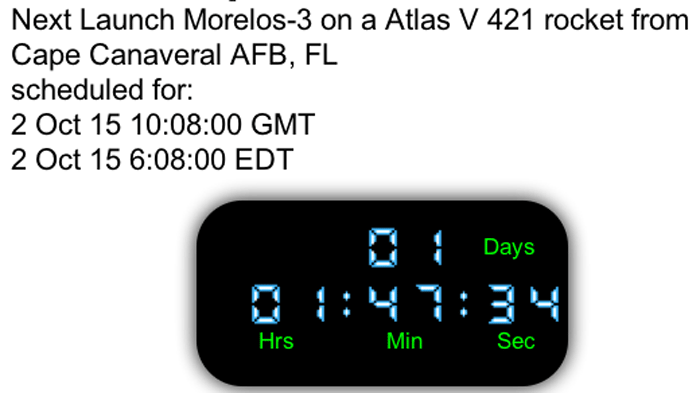

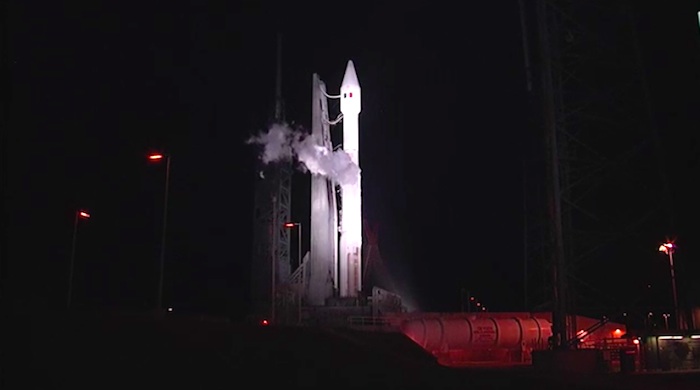


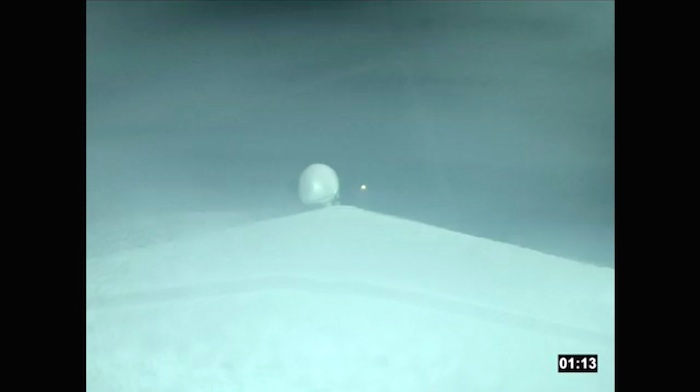

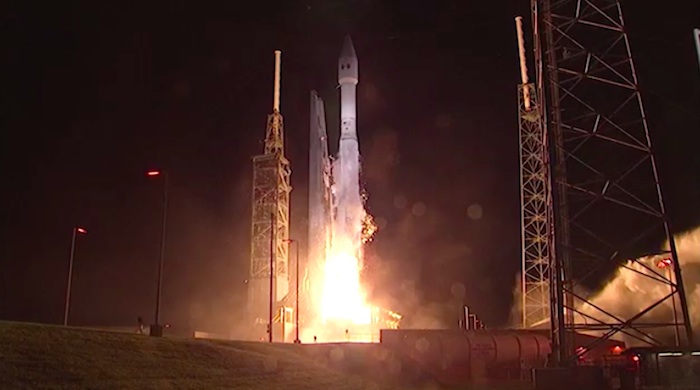
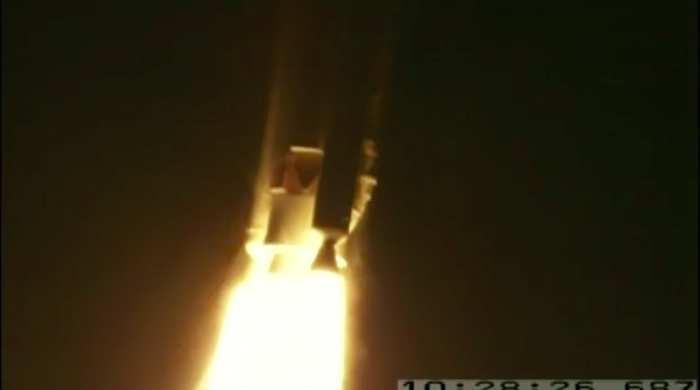



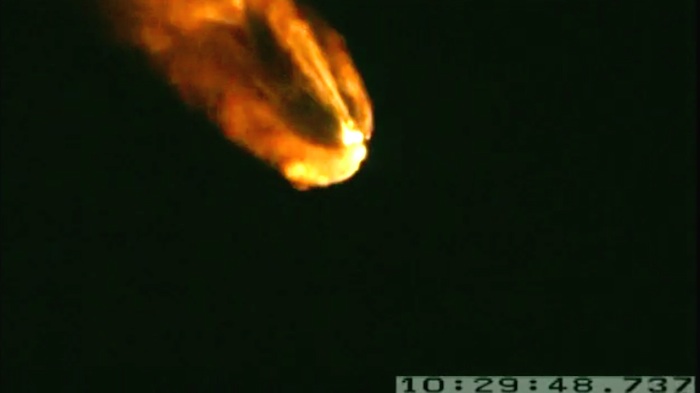
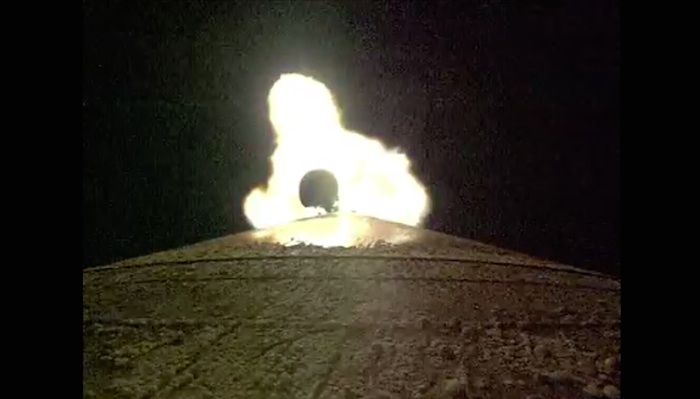

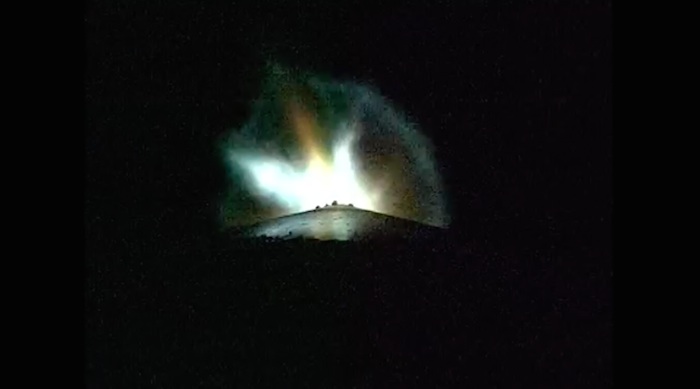

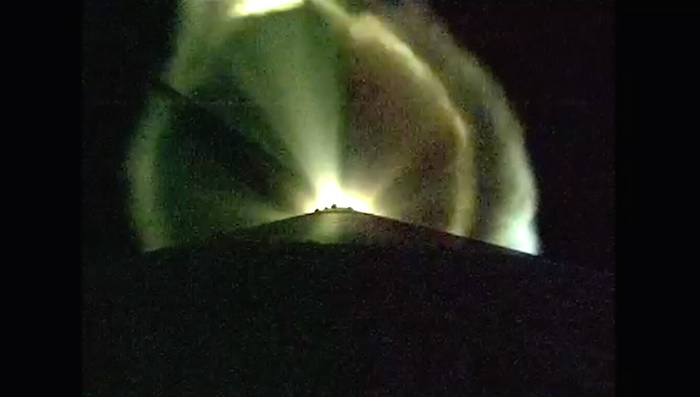



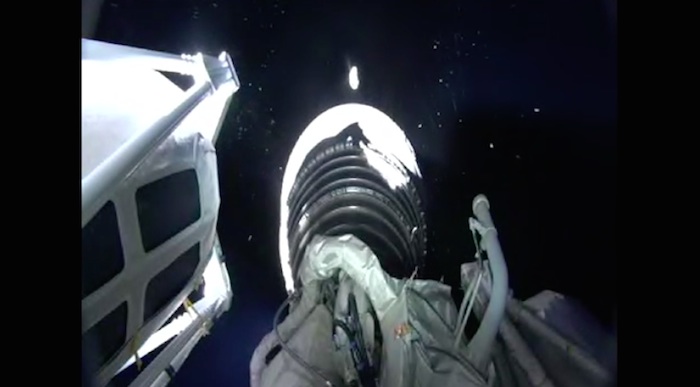






It has been suggested by Space News’ Peter B. de Selding that a recent reduction of Atlas V costs by up to 20 percent helped ULA to secure the Morelos-3 launch contract. In the days after the contract award, Robert Cleave, president of Lockheed Martin Commercial Launch Services, expressed hopes that two commercial contracts per year could be captured by ULA from 2015 onward. “Though highly reliable, Atlas V has been all but absent from the commercial geostationary launch services market for several years,” Space News explained, “due to its high cost and the difficulty of squeezing commercial missions into ULA’s crowded government manifest.” Cleave pointed to the Air Force’s planned “block-buy” of up to 36 Atlas V and Delta IV booster cores as a key factor in allowing ULA to bring its commercial costs down. Last month, contracts were signed to deliver the EchoStar XIX commercial communications satellite into orbit in the fall of 2016.
In terms of the 421 vehicle, which will deliver Morelos-3 on Friday, this particular variant of the Atlas V has flown on four previous occasions. Its maiden voyage was in October 2007, carrying the first Wideband Global Satcom (WGS-1), followed by the ICO-G1 comsat and, more recently, the WGS-2 and Magnetospheric Multiscale Mission (MMS) payloads in April 2009 and March 2015 respectively. As a consequence, 2015 marks the first year in which the 421 configuration has been employed on more than one occasion. In keeping with the ULA numbering system, the booster is equipped with a 13-foot-diameter (4-meter) payload fairing, two strap-on solid-fueled boosters, and a single-engine Centaur upper stage. It is capable of delivering up to 31,012 pounds (14,067 kg) into low-Earth orbit and up to 15,190 pounds (6,890 kg) to GTO, rendering Morelos-3’s 11,740-pound (5,325-kg) mass at launch well within the top quarter of the 421’s payload capability.
The meteorological outlook for Friday’s opening launch attempt remain broadly favorable, with a 70-percent likelihood of acceptable conditions at T-0, according to the 45th Weather Squadron at Patrick Air Force Base. As of yesterday (Tuesday), a pair of tropical systems were being monitored, with a low-pressure area in the Gulf of Mexico posing a 40-percent chance of evolving into a tropical cyclone by the end of the week, whilst Tropical Depression (TD) Eleven developed on Monday evening and presently lies to the east-southeast of the Cape. “By Thursday, an upper-level trough will dig into the Eastern U.S., pulling TD Eleven north before it can reach the U.S. East Coast,” it was noted. “Showers and thunderstorms are expected Thursday afternoon and may be in the area when Mobile Launch Platform (MLP) roll operations begin.”
With Morelos-3 having been transferred from the Astrotech processing facility at the Cape and mounted within its bulbous Payload Fairing (PLF) atop the 195-foot-tall (59.4-meter) Atlas V in the Vertical Integration Facility (VIF) at SLC-41 last Friday (25 September), the final milestones are steadily clearing, ahead of today’s scheduled rollout on the MLP to the pad surface. “Winds for MLP roll and through launch time will be gusting to 17 knots,” the 45th Weather Squadron pointed out. “The atmosphere will begin to slowly dry out overnight, through the morning of launch, and bring noticeably cooler weather into Florida for the weekend.” Nevertheless, there could remain a number of thick cloud layers early Friday and “complex” sunspot activity raises the possibility for a high-energy X-class, Earth-directed flare. In summary, thick cloud and solar weather pose a 30-percent threat to an on-time launch, with conditions expected to improve to 80-percent favorable on Saturday. “In the event of a 24-hour delay, weather will improve as the atmosphere dries out,” it was noted. “Winds will shift to the northwest and gust to 20 knots, causing a slight concern for liftoff winds. Space weather will continue to pose a threat as well.”
Assuming all goes well on Friday, the Atlas V’s Russian-built RD-180 first-stage engine—burning liquid oxygen and a highly refined form of rocket-grade kerosene, known as “RP-1”—will ignite at T-2.7 seconds, delivering a propulsive yield of 860,000 pounds (390,000 kg). At T-0, the twin side-mounted solid-fueled boosters will ignite, producing a combined thrust of close to 700,000 pounds (316,000 kg) and initiating a slow climb away from SLC-41, after which the avionics of the Centaur upper stage will command a pitch, roll and yaw program maneuver to establish the stack onto the proper, 104-degree flight azimuth.
Interestingly, this climb-out will provide an uncanny visual similarity for what onlookers might be expected to see in two years’ time, when an Atlas V 422—configured like the 421, with the exception that it will boast a Dual-Engine Centaur (DEC) upper stage—launches the first of Boeing’s recently-renamed “Starliner” spacecraft on its inaugural trek to the International Space Station (ISS). As outlined in a recent AmericaSpace article, the SLC-41 site is in the midst of receiving multiple modifications in readiness for its Starliner role, with the construction of the seven-tiered, 200-foot-tall (60.9-meter) crew access tower approaching completion.
A little over two minutes into tomorrow’s flight, the Atlas V 421’s twin Aerojet-built boosters will exhaust their propellant and be jettisoned, whilst the booster will continue its journey under the impulse of the RD-180, until it shuts down about 250 seconds after liftoff. This will be followed by a pair of Centaur burns—the first running for 14 minutes, the second for about a minute—to establish Morelos-3 in a Geostationary Transfer Orbit (GTO) of 2,588 x 19,323 nautical miles (4,792 km x 35,786 km), from where it will maneuver to its programmed orbit “slot.” At its Beginning of Life (BOL), the satellite’s mass is expected to be about 7,000 pounds (3,200 kg).
The Centaur will perform three lengthy firings of its 23,900-pound-thrust (10,840-kg) RL-10C engine. First trialed during last December’s NROL-35 mission for the National Reconnaissance Office, the liquid oxygen/hydrogen-fueled RL-10C has a slightly higher thrust than the 22,300 pounds (10,100 kg) of the earlier RL-10A, although its specific impulse is a little lower than its counterpart.
Flying on behalf of Mexico’s Ministry of Communications and Transportation, Morelos-3 was originally conceived in the summer of 2009 as part of the Mexican Satellite System (MEXSAT). A year later, in December 2010, Boeing signed contracts worth about $1 billion with the Mexican Government to build three satellites, two ground sites, associated network operations systems, and reference user terminals. It was stressed at the time that MEXSAT would “provide secure communications for Mexico’s national security needs, as well as enhanced coverage for the country’s civil telecommunications.” Under the terms of the contract, two Mobile Satellite Services (MSS) spacecraft—MEXSAT-1 and MEXSAT-2—would utilize Boeing’s 702HP “bus,” powered by a pair of five-panel gallium arsenide solar arrays and each equipped with a 72-foot (22-meter) L-band reflector for mobile satellite services and a 6.6-foot (2-meter) Ku-band antenna. A third satellite, MEXSAT-3, would be built by Orbital Sciences Corp. Smaller than its siblings, and weighing 6,393 pounds (2,900 kg) at launch, it was designated the “Fixed Satellite Services” (FSS) member of the trio and is based on Orbital’s Star 2.4 bus, fitted with 12 Ku-band and 12 C-band transponders to provide “full coverage of Mexico and its patrimonial seas and relay civil communications for socioeconomic development.”
The Orbital-built spacecraft, MEXSAT-3, was successfully launched atop an Ariane 5 booster from the Guiana Space Centre in Kourou, French Guiana, in December 2012, and is presently situated at 114.9 degrees West longitude. It was later renamed “Bicentenario,” in honor of the 200th anniversary of Mexico’s declaration of independence from Spain. However, the second-launched satellite, MEXSAT-1—also known as “Centenario,” marking the centenary of the 1910-1920 Mexican Revolution—met with less success. Its construction was completed in November 2013 and it was lofted atop an International Launch Services (ILS) Proton-M booster from the Baikonur Cosmodrome in Kazakhstan on 16 May 2015, but was lost about 490 seconds into the flight, due to a third-stage malfunction.
In the meantime, MEXSAT-2 was structurally complete by June 2014 and after extensive systems testing was placed into storage, pending its delivery to the Cape for launch. Like its siblings, it received another name, but rather than one which honored a centenary or bicentenary, it was dubbed “Morelos-3,” providing a tangible link with three previous generations of Boeing-built and Mexican-owned communications satellites: Morelos-1 and Morelos-2, launched by the shuttle in June and November 1985, and Solidaridad-1 and Solidaridad-2, launched atop Ariane 4 boosters in November 1993 and October 1994. When operational, Morelos-3 will occupy an orbital “slot” at 116.8 degrees West.
Assuming a successful launch of Morelos-3, the odds are in ULA’s favor as it seeks to fly around a dozen missions in 2015. The Atlas V has borne the brunt of the year’s work, delivering two heavyweight MUOS military comsats into orbit in January and September, a GPS satellite in July, the X-37B mini-shuttle in May, and the MMS mission to High Earth Orbit (HEO) in March. Meanwhile, the Delta II accomplished its single planned flight of 2015 by transporting the Soil Moisture Active Passive (SMAP) spacecraft into orbit in January and a pair of Delta IVs carried a GPS satellite in March and the latest Wideband Global Satcom (WGS-7) in July. On the eve of the Morelos-3 launch, that represents eight missions accomplished, with four remaining—the Mexican comsat, the National Reconnaissance Office’s NROL-55 classified payload in October, another GPS satellite in November, and the long-awaited first ULA-boosted Cygnus cargo mission to the International Space Station (ISS) on 3 December—before the end of the year. All four of those remaining missions will utilize variants of the Atlas V, thereby tying 2015 with last year in having flown the booster a record-setting nine times.
.

Quelle: AS
-
Update: 2.10.2015 / 12.35 MESZ
.
Launch-LIVE-Frams:
























Quelle: ULA

--


3842 Views
